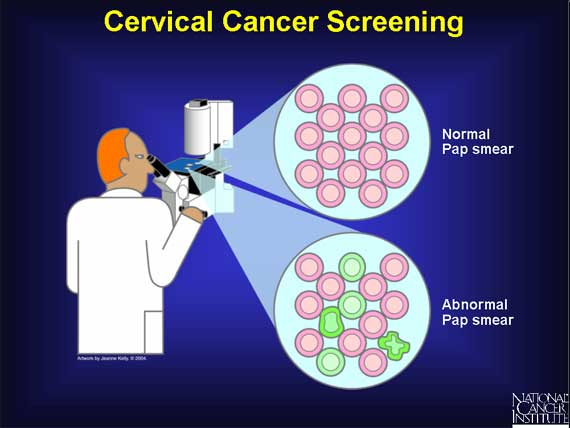|
A screening technique called the Pap test (or Pap smear) allows early detection of cancer of the cervix, the narrow portion of the uterus that extends down into the upper part of the vagina. In this procedure, a doctor uses a small brush or wooden scraper to remove a sample of cells from the cervix and upper vagina. The cells are placed on a slide and sent to a laboratory, where a microscope is used to check for abnormalities. Since the 1930s, early detection using the Pap test has helped lower the death rate from cervical cancer more than 75 percent.
Should abnormalities be found, an additional test may be necessary. There are now 13 high-risk types of human papillomaviruses (HPV) recognized as the major causes of cervical cancer. The U.S. Food and Drug Administration has approved an HPV test that can identify their presence in a tissue sample. This test can detect the viruses even before there are any conclusive visible changes to the cervical cells.

< Previous | Index | Next Slide > |